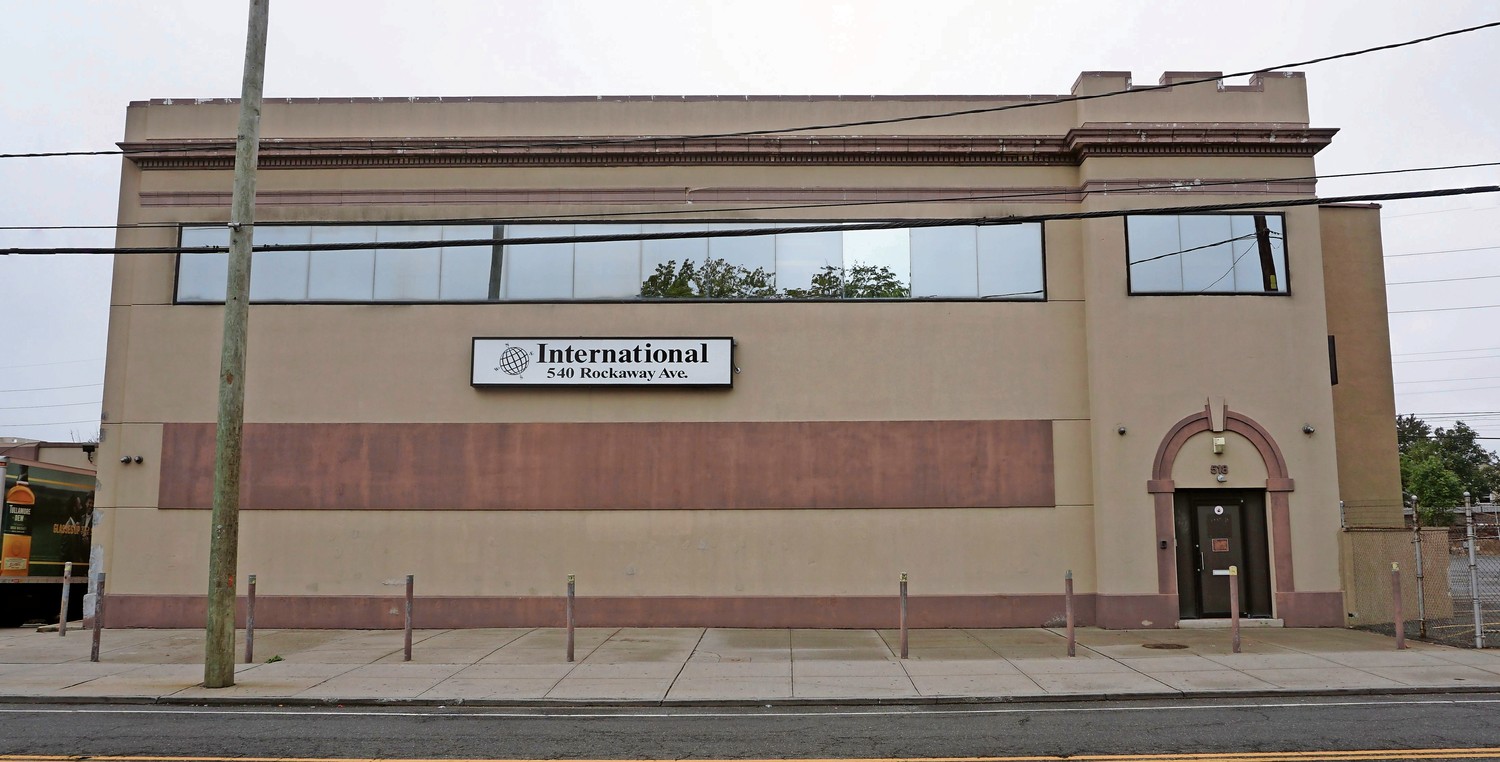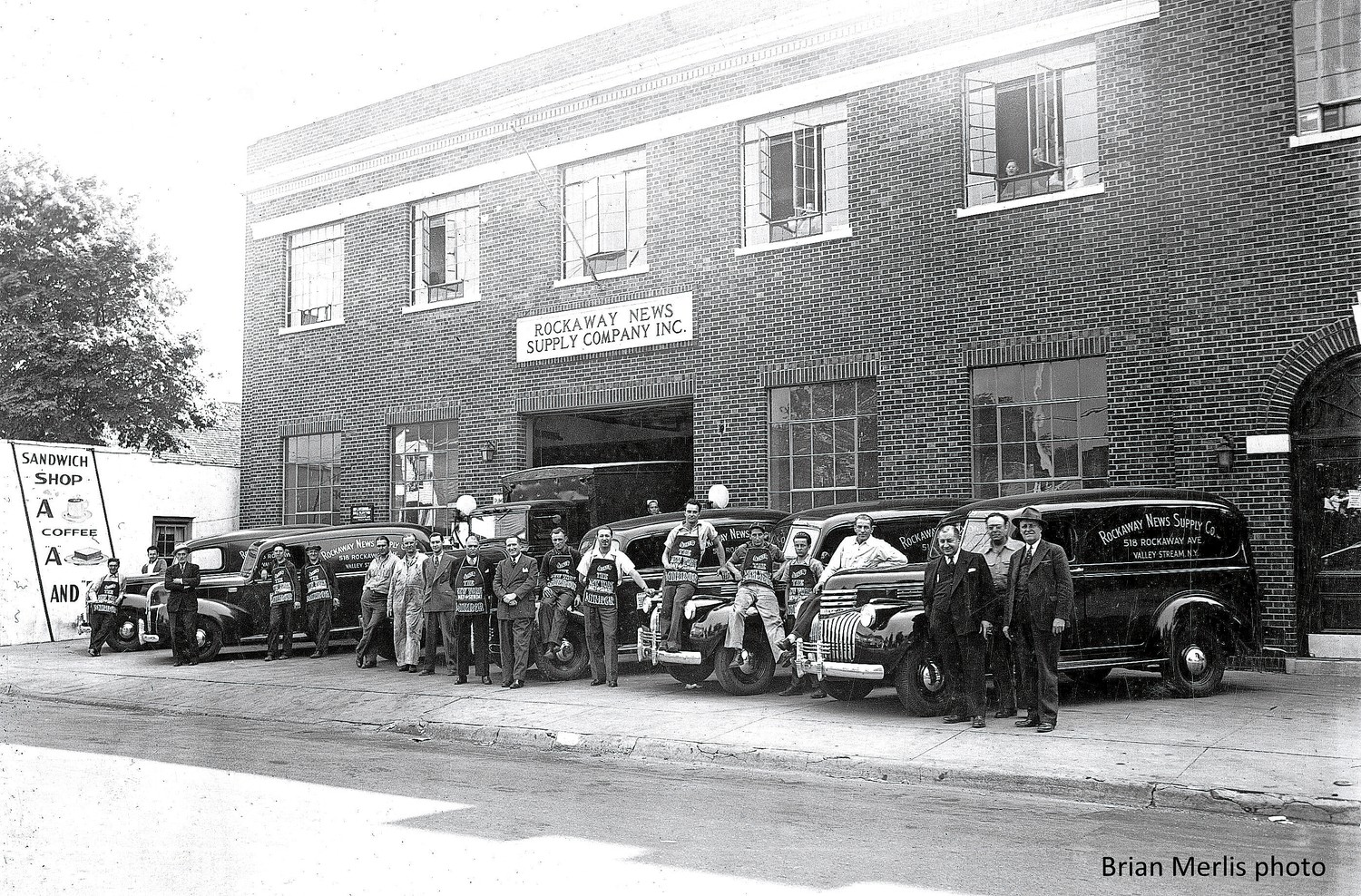The rise and fall of Rockaway News
It would be natural to think that Rockaway News Supply Company, Inc. (Rockaway News) was named because of its location on Rockaway Avenue — but it wasn’t. The company, which sold and distributed newspapers, was founded in the Hammels neighborhood of Far Rockaway by John Somyak. In its heyday, Rockaway News delivered many papers, including the New York Times, the Daily News, the New York Post and Newsday.
Somyak (1889-1960), a Baltimore native, moved to Hammels as a teen. By age 18, he had his first newspaper franchise, and in 1922, he owned 30 delivery trucks and employed 100 men. In 1931, Somyak applied for a permit to erect a five-car garage, but the zoning board denied his application, and the wheels were soon set in motion to relocate the business to Valley Stream. “A site for a two-story garage, office and warehouse building has been sold to the Rockaway News Supply Company,” reported the July 5, 1933, edition of the New York Times. The structure, designed by the architect Joseph Gunther, cost $35,000, and was located at what is now 540 Rockaway Avenue.
This 1940s photo hardly resembles the building today, except in one detail. Although the top of the building is not visible, it casts a shadow in the street showing the battlement that adorns the right side of the roofline. The crenellation has miraculously remained intact, surviving multiple renovations. In the photo, Rockaway News executives are standing alongside the aproned members of the Newspaper and Mail Deliverers’ Union of New York and Vicinity (NMDU).
Founded in 1901, NMDU was a horse-and-buggy newspaper delivery service born out of the newsboy strike of 1899. During the Depression, when jobs were scarce, the union books were closed to new members to protect the livelihoods of drivers and their families. In January 1946, Rockaway News and the union executed an agreement officially recognizing Rockaway News as a closed shop (a workplace where membership in a union is a condition for employment). Although the majority of employees were members of NMDU, a number of non-union workers also filled open positions. On Christmas Day 1946, a fire broke out at Rockaway News, the cause of which was said to be a delivery truck’s faulty wire connection. In April 1947, the union forced Rockaway News to dismiss 10 nonunion workers. The nonunion employees petitioned the State Supreme Court in Mineola to enjoin the company from discharging them. In May of that year, the court ruled in favor of Rockaway News and the union. The Taft–Hartley Act, enacted on June 23, 1947, outlawed many closed union practices. In December 1947, the Appellate Division in Brooklyn reversed the State Supreme Court decision that denied employment to the nonunion employees.
On January 30, 1953, the union went on strike, demanding a pay increase and benefits. In addition to halting delivery of newspapers with which NMDU had contracts, the union also prohibited Rockaway News drivers from delivering papers for Newsday, which did not have an agreement with the union, but whose papers were delivered by Rockaway News since the newspaper’s inception in 1940. The State Supreme Court stepped in when union workers used violence to stop Newsday’s circulation department from distributing the papers themselves. A Newsday employee was run off the road and beaten. Two days after the strike began Newsday’s circulation office in Lynbrook burst into flames.
On November 28, 1958, nine newspapers decided to cut ties with Rockaway News, citing accumulating difficulties with the company. NMDU promptly went on strike, objecting to the pullout, claiming a loss of contractual benefits. Consequently, Rockaway News had only one account left—Newsday. And once again, as in the 1953 strike, the union had issues with this arrangement and refused to allow Rockaway News to deliver Newsday’s papers.
In 1958, Rockaway News entered into receivership. The building was sold at public auction in April 1960, and John Somyak passed away on May 9, 1960. All the New York dailies reported his passing; the same papers that chronicled, often in excruciating detail, the rise and fall of Rockaway News.









